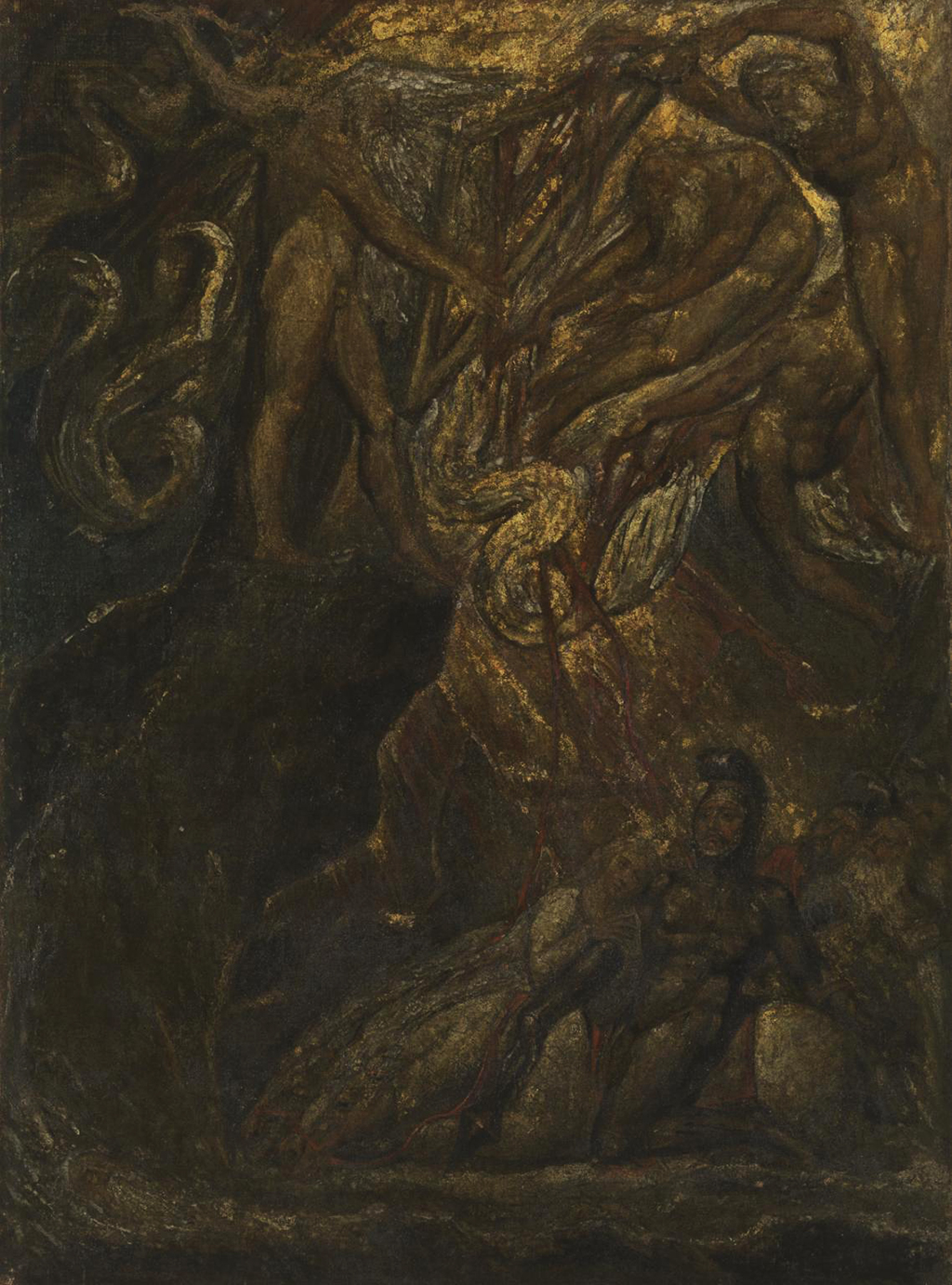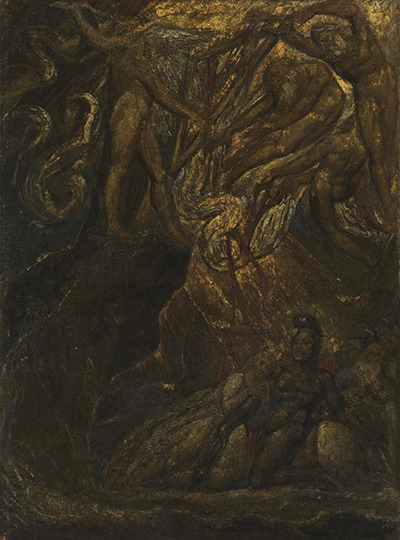This painting was produced using tempera and gold on canvas in around 1809. William Blake chose its title as The Bard, from Gray and it is now a part of the collection of the Tate in the UK.
William Blake would make use of a wide variety of mediums within his career, and whilst most of his paintings made use of watercolour, he did also use tempera on occasion. We find it here combined with touches of gold, which no doubt would have been ground down in order to be used in this way. Pre-Renaissance artists such as Duccio would work in this way but it was rare by the time that Blake did similar in the early 19th century - The Bard, from Gray is actually dated at around 1809. The item was purchased in 1920 and it eventually made its way into the Tate Britain, where it remains today as part of a larger display of this artist's work. The also own one of his most famous paintings of all, namely Newton. Blake was also a highly regarded poet, and some of his best poems included The Tyger and London. He would leave behind one of the most diverse ranges of work for any creative individual in British history and deservedly continues to receive great admiration all these years later.
The Bard, from Gray is around 60cm tall and 44cm wide, though slightly larger with the addition of a frame which still exists today. It is relatively dark in mood and tone, with elements hard to decipher. We can see several figures within an outdoor scene, perhaps within forestry. There is a single figure lying perhaps by a river at the foot of the artwork, and then a number of standing figures at the top. Light sneaks through from above, which is perhaps the part which makes use of the gold paint. Sadly, the artwork has actually been amended multiple times since the artist first completed it, and so it is hard to know how much of what we see in front of us is precisely as intended by Blake himself. Additionally, light damage may have muted some of the colour tones, an impact which has occurred to a good number of his artworks, though today they are protected much more carefully in order to ensure their long term preservation.
Artist Blake prepared for this work with several drawings, some of which can now be found in the Philadelphia Museum of Art. There was also a watercolour on the same theme though this has since been lost, possibly destroyed. The composition in this painting displays a single bard who is surrounded by several ghosts who represent other bards who have been sentenced to death by Edward I. Legend dictates that the King would now be cursed, as would his offspring too and this is told within Gray's poem. In the sense of the ghostly figures, it is suitable for such a dark tone to be used but actually the original piece may not have been quite like this, and has slowly deteriorated in brightness over time. The use of blue is believed to have particularly been impacted, such was the different compounds used by the artist for the different colours that can behave differently in light over a period of several centuries.





